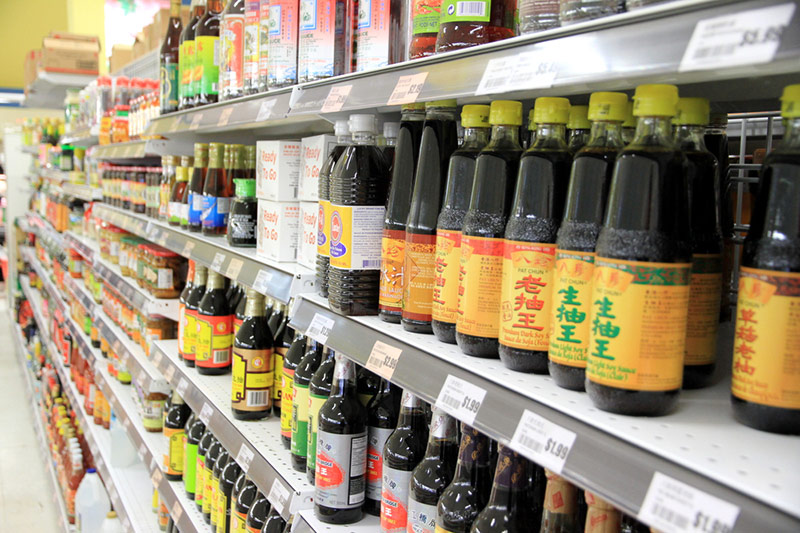The ASX is set for a slow start to the week. ASX 200 futures are down 0.4% to 8,282 points despite Wall Street closing out its best week of the year on Friday. The index is set to fall on China's absence of fresh stimulus as Trump trade headwinds loom.
The ASX200 closed last week 176 points higher at 8,295, marking a 2.17% increase. The rally was driven by positive momentum from Wall Street in the wake of Donald Trump's re-election.
Sector performance was led by Information Technology, which surged 5.83%, followed by Industrials (+3.67%), Financials (+3.59%) and Consumer Discretionary (+2.90%).
In contrast, the Real Estate sector fell 1.54%, while Energy slipped 0.61%. Materials and Consumer Staples lagged, gaining just 0.47% and 0.73%, respectively.
Top-performing stocks included Sigma Pharma, which gained 29.59%, Appen (+27.08%), Articore (+15.38%) and Mayne Pharma (+15.12%).
The week’s biggest decliners were Domain, down 11.26%, DroneShield (-10.53%), Domino’s Pizza (-8.82%) and A2 Milk (-7.53%).
“The key event on the local data calendar this week is Thursday's labour force report for October,” notes IG Markets analyst Tony Sycamore. “Last month (September), the Australian economy added 64,100 jobs, significantly stronger than the 25,000 gain the market had expected. The unemployment rate stayed at 4.1% despite the participation rate increasing to a record high of 67.2%.
“This month, the preliminary expectation is that the Australian economy will create 20,000 jobs and that the unemployment rate to rise to 4.2%. The Australian interest rate market is pricing in 3bp of RBA rate cuts for December, with a first 25bp RBA rate cut not expected until May 2025.”
US stocks extend rally
US stocks extended their rally on Friday, reaching record highs amid optimism over Donald Trump's electoral victory and a subsequent interest rate cut by the Federal Reserve. For the week, the Nasdaq gained 5.41%, the S&P 500 rose 4.66% and the Dow Jones added 1,936 points, up 4.61%.
As final election results are still pending, the market awaits confirmation of a potential Republican 'Red Sweep', which could streamline the implementation of Trump's preferred trade and tax policies.
Looking ahead, market direction will hinge on whether Trump prioritises tax cuts or tariffs, each with markedly different impacts on equities. Notably, in 2016 Trump’s initial focus on tax cuts propelled markets higher, whereas later tariffs on China created stock market challenges through 2018 and 2019.
“Speaking of China, its NPC announcement on Friday fell short of market expectations,” notes Sycamore.
“The NPC approved a 5-year, Rmb10trn local government debt swap program with murky forward guidance hinting at only modest stimulus for housing and consumption.
"Nonetheless the measures announced provide additional confirmation that Beijing is recalibrating its economic strategy to tackle deflation and maintain stability. A move that has taken on additional importance following the release of soft Chinese inflation data over the weekend.
“Looking ahead the CPI report for October is the key US release this week. In September the annual rate of core inflation ticked up to 3.3% from a three-year low of 3.2%.
"The expectation for October is for the core rate to remain at 3.3% YoY. The rates market starts the week pricing in an 80% probability of another 25-basis point Fed cut at its meeting on December 18th.”
Declines in Europe
European share markets declined on Friday, with most sectors and major exchanges ending in negative territory. Mining stocks saw the steepest losses, dropping 3.9%, following China’s announcement of a 10 trillion yuan (US$1.4 trillion) debt package that fell short of investor expectations, leading to a retreat in metal prices.
- The FTSEurofirst 300 index across the continent slipped 0.7%, marking its third consecutive week of declines, down 0.9% for the period.
- In London, the UK FTSE 100 index shed 0.8% to reach a three-month low, recording a weekly loss of 1.3%.
Currencies and commodities
Currencies
Currencies were mixed against the US dollar in European and US trading.
- The Euro declined from US$1.0796 to US$1.0688, stabilising near US$1.0720 at the US close.
- The Australian dollar dipped from US66.56 cents to US65.58 cents, settling around US65.80 cents.
- The Japanese yen strengthened from 152.94 to JPY152.17 per US dollar, closing near JPY152.65.
Commodities
Global oil prices dropped over 2% on Friday as concerns eased about long-term supply disruptions from a hurricane in the US Gulf of Mexico, while China’s economic stimulus measures underwhelmed traders.
- Brent crude fell US$1.76, or 2.3%, to US$73.87 per barrel.
- US Nymex crude lost US$1.98, or 2.7%, to US$70.38 per barrel.
Despite Friday's drop, oil prices were up over 1% for the week.
Base metals also retreated, with copper futures down 2.8% on investor disappointment with China’s limited fiscal stimulus, aimed at reviving its struggling economy. Aluminium futures dropped 3.5%.
For the week, copper fell 1.4% while aluminium posted a 0.6% gain.
Gold futures slipped US$11.00, or 0.4%, to US$2,694.80 per ounce on Friday, with spot gold trading near US$2,683. The precious metal declined 2.0% over the week, marking its largest weekly loss in over five months, driven by a stronger US dollar and investor recalibration of interest rate expectations following Donald Trump’s election win.
Iron ore futures declined US$1.40, or 1.3%, to US$103.82 per tonne as investors adopted caution amid weakening demand and in anticipation of China’s forthcoming fiscal stimulus announcement.
What about small caps?
The S&P/ASX Small Ordinaries finished Friday 1.21% higher to 3,169.60. It gained 1.05% for the week.
It is a steady start on the news front and you can read about the following and more throughout the day.
